|
by Marriott_Guy |
|||
|
In 2012, Valve Corporation formally announced that it would
develop hardware to augment its wildly popular Steam digital
gaming services platform. This new computing device,
codenamed 'Bigfoot', would provide existing Steam users the
option to experience the openness of the PC platform in the
comforts of one's living room. Valve has decided to take
the same approach as the 3DO Company back in 1993 - develop the
base hardware specifications and partner with other manufacturers to
produce systems to power the experience. This series of
hybrid consoles are collectively known as the Steam Machines. The driving force behind the Steam Machine is the SteamOS, an open source Linux based operating system developed by Valve. The primary focus of this software is to play video games, though other functions are available including web browsing, multimedia playback and video streaming (i.e. Netflix). A desktop mode will also be available for running standard Linux applications. Systems must meet the following minimum hardware requirements to run SteamOS: |
|||
|
• Intel or AMD 64-bit capable processor • 4GB or more memory |
• 500 GB or larger disk • NVIDIA, Intel, or AMD graphics card |
• USB port or DVD drive for installation • UEFI boot support |
|
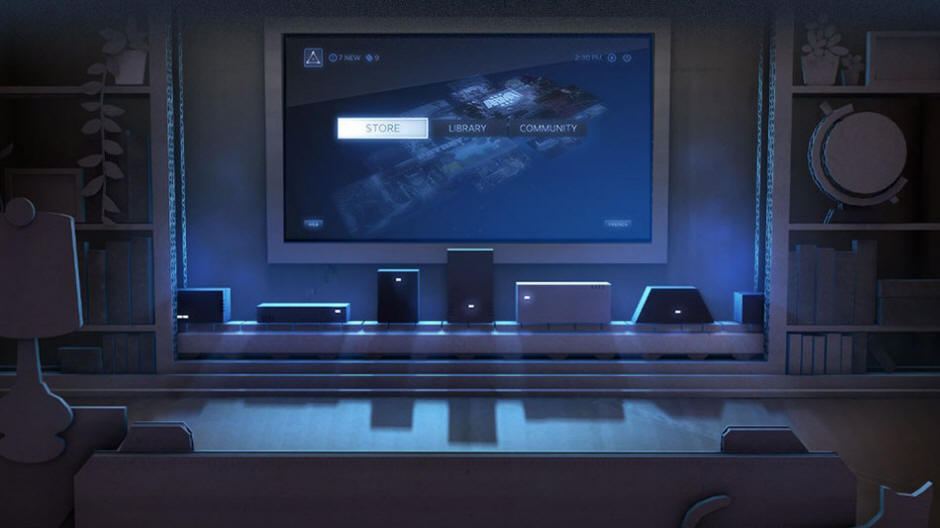 |
|||
|
The concept of bringing the freedom of the PC gaming experience
to the Big Screen has been attempted in the past. Many
computers in the late 1970s and 1980s supported video output to
a standard television, including the infamous Commodore 64, Texas Instruments TI-99/4A
amongst many others. These early ventures succeeded in
delivering the audio/video experience to the television, but did
not address simple plug n' play aspect of the video game
console. Tweaks to hardware settings and the like were
still required, functions that could be problematic for the
average living room gamer. Other companies have attempted a like venture. Apple gave it a go in 1995 with their multimedia appliance the Pippin, manufactured and released by Bandai and Katz Media. DISCover technology was embedded in hybrid systems produced by Alienware in 2004, allowing true Drop 'n Play. Though definitely advancements were achieved by alleviating the need to perform any adjustments to the system, a core problem still remained - how to incorporate the functionality of full size keyboard and mouse into a game controller. Valve's proposed solution is the Steam Controller. |
|||
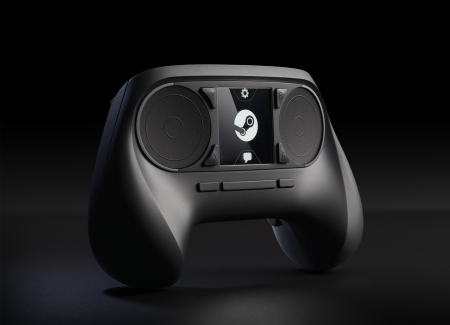 Original Design |
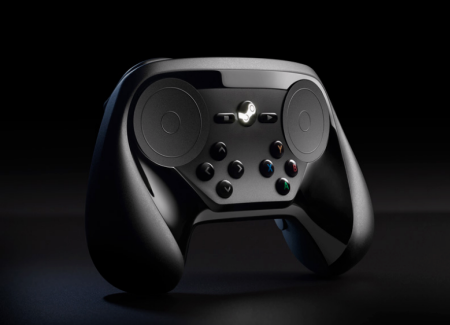 Latest Version |
||
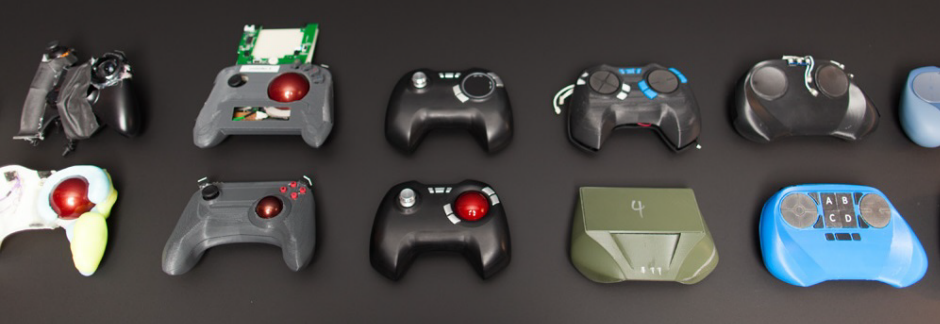 Various Steam Controller Prototypes |
|||
| Valve originally planned to release the final specifications, including the Steam Controller, for third party development and subsequent launch in 2014. As of this writing, Valve has postponed full retail release until 2015 to allow time to further refine the Steam Controller and SteamOS. | |||
|
by Dark Watcher |
|||
| As a console historian, we are always fascinated with how the market changes. In previous generations when consoles were at the height of success, computer manufacturers would put their computers into console shells. When the pendulum of success swung the other way, console makers gave their devices computer-like functionality. The eighth generation of gaming consoles pretty much blurred the lines with both the PlayStation 4 and Xbox One using the same x86 programming architecture and features found in PCs. Not immediately impressed with either next-gen console at the time, we figured it may be time to venture into PC gaming. We solidified the decision when we found an Alienware Alpha "Steam Machine" for at-or-around the same price as the going rate of both current next-gen consoles. | |||
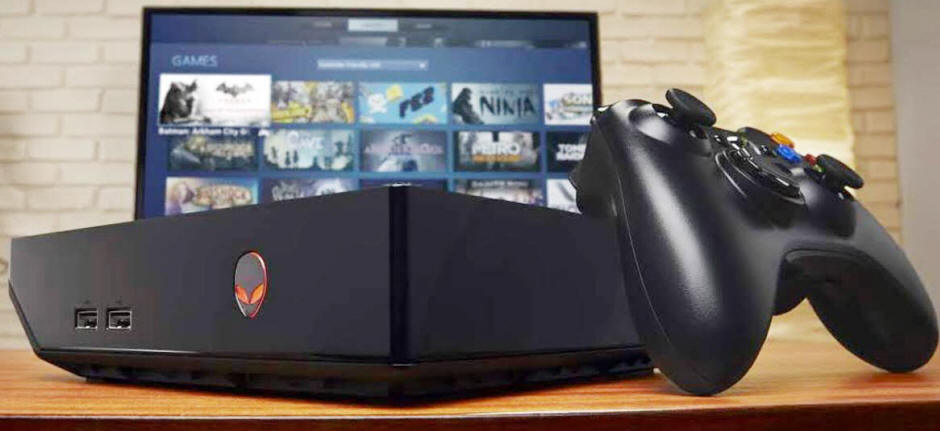 |
|||
| Now before we take the opportunity to provide our review, we feel we should put out some info and caveats in order for you to tweak perceptions accordingly. Our review is based on an older Alpha model ASM100-1580. This model has the 2.9 GHz Intel Core i3 processor, and we upgraded the hard drive to a 1GB SSHD with a bump in RAM to 8GB (up to 16GB possible) DDR3. We did the upgrades on our own (which is VERY easy to do), but Dell also does this and have more powerful models (for a price). We also tinkered with the idea of keeping it as a legitimate SteamOS running "Steam Machine", but eventually chose to keep it WINDOWS 10 running "Alpha" (We'll cover the why later in the review). With the "techy" mumbo jumbo out of the way, we are going to review the Alpha as a gaming console following the established guidelines in our What Makes it a Console? article. Let's get to it. | |||
 |
|||
| The Alpha comes in a sleek and compact form factor somewhere between the size of the Sega Dreamcast and the Nintendo Wii. It runs quiet and is easy to take on the road. It features LED lights at the front that can be customized into different colors using the Alpha UI settings. There are two USB 2.0 ports in the front for controllers, mice, or keyboards. In the back, you have HDMI ports for pass-thru (similar to the Xbox One), two USB 3.0 ports for expansion and added storage, optical audio out (Toslink) and GB Ethernet. Of course, the Alpha also has wireless and Bluetooth 4.0 (our old model has 802.11bgn, but newer models have 802.11ac). | |||
 |
|||
|
The Alpha is capable of producing impressive 1080p resolution
graphics with good frame rates. 8th gen games such as Far
Cry 4, Witcher 3 and Fallout 4 look better and run smoother then
optimized versions on Xbox One and PlayStation 4. The
Alpha uses a custom NVidia Maxwell GPU that is somewhere near a
GeForce GTX 860M and GTX 750 Ti, and could potentially
outperform or at a minimum keep pace with current console
releases (but fall short of serious computer gaming graphics
performance). The Alpha can also pass multi-channel audio
via optical or HDMI, and of course pass higher-resolution audio
through HDMI. Under the Alpha and behind a trap door is a
hidden USB 2.0 port. This recessed port could be used for
any small USB dongle, but the main purpose is for the Steam
Controller. Alienware did not want to delay their launch since the Steam Controller was not initially ready for prime time. So our model came with an Xbox 360 controller and USB receiver (may not come with newer models). Most games on Steam work natively with the XB360 controller and technically the Alpha can use any USB controller. We did eventually purchase the Steam Controller and we have to say this sucker is a beast all unto itself. |
|||
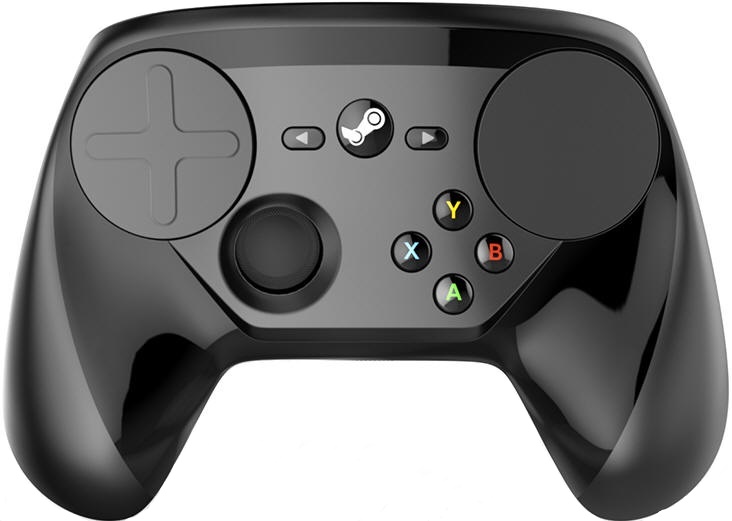 |
|||
| The Steam Controller is a wild technical experiment meant to bridge the gap between standard console controllers and KEYB / Mouse PC gamers. Imagine the standard 7th / 8th generation 16-button controller with your bumper shoulder buttons, dual-stage triggers, analog pressure, etc. Now invert the ergonomic design, add two high resolution trackpads with haptic feedback, two paddle buttons in the back and a high accuracy and low latency gyroscope for motion control. Now make everything customizable, to include virtual buttons on the trackpads and you have one foreign beast as pictured above. Like many of the early adopters, we were at a loss as to how utilize the controller. We imagine it was akin to handing a modern Dual-Shock controller to someone of the Atari 2600 generation. However, thanks to user-generated per game controller configurations, we are slowly beginning to enjoy the Steam Controller. Once you are in Steam Big Picture, the controller receives firmware updates, custom start-up sounds and downloadable configurations based on the game being played. You can tweak your own controls or adopt top rated configurations. The controller can last 80 hours on two AA batteries. The downside is that these controller configurations only work on games or programs launched from Steam (although users have found some work arounds). | |||
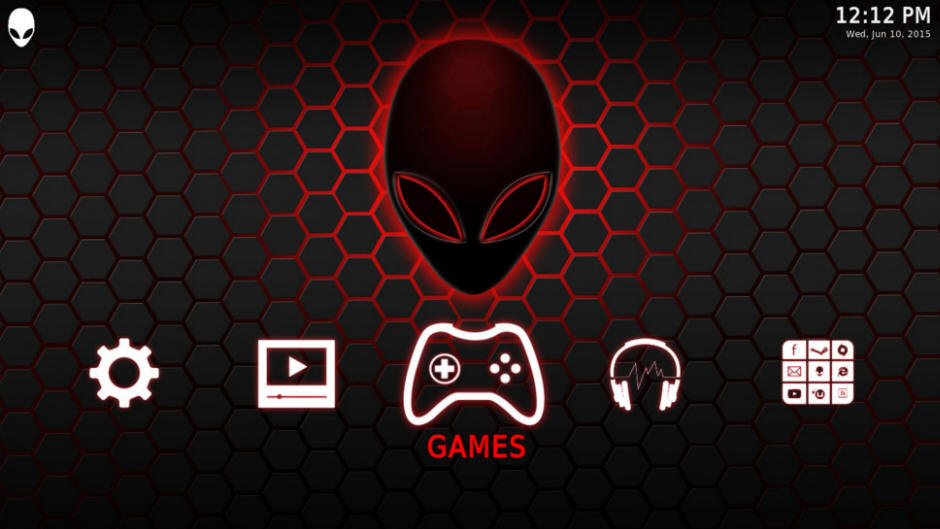 |
|||
|
Regarding software, the console boots straight into Steam Big
Picture mode, which is a clean interface where all purchased
Steam games are available. However, we kept it Alpha.
In 'Console Mode', the Alpha boots right into the Hivemind user
interface (displayed above) similar to Playstation's XMB™ (XrossMediaBar).
Alienware built their Alpha UI Hivemind using the Open Source
Kodi (XBMC) code, which retains many customizations (and
compatibility with all Kodi add-ons) and makes navigating menus
very user friendly. From the UI, you can select music,
pictures, settings, videos, programs and of course games. You
can simply navigate to your game of choice using your controller
and the games boots right up similar to a game downloaded onto
your Xbox or Playstation. You can also still boot into
Steam Big Picture mode straight from the Alpha UI. Between
the interface, the Steam launcher, an add-on for NVidia's
GeForce Experience and other apps that run silent in the
background, the Alpha does a good job of keeping a console-like
venture. You just connect to your television via HDMI and
you're on to playing games. Our initial draw to the idea of a 'Steam Machine' was the ability to play modern games without having to choose between a particular console platform. Ole DW also has a great fondness for Indie games. SteamOS would give us access to over 1500+ games and the ability to stream other games. However with the Alpha UI WIN10 config, we have full access to the over 6500+ game Steam Library (damn Steam sales…but much love from DW to Humble Bundle and the charities they support!). Alpha Hivemind also allowed us to add games from other sources and has program launchers for EA’s Origin, GOG and more. This alone gives the Alpha tremendous gamer value, but the media center capabilities also make it an impressive home theater PC (HTPC). See below for the updated Hivemind interface. |
|||
 |
|||
| The Alienware Alpha has quickly become one of our favorite consoles…er…computer…er...HTPC. It successfully allowed us to bridge the worlds between console and PC gaming. It may not please hardcore console / PC enthusiasts, but it pleases us as a gamer. As a console historian, we feel it is the best example of a true game console-like experience. Kudos to both Alienware and Valve… | |||
|






 2010s - NOTES
2010s - NOTES


 MODELS
MODELS
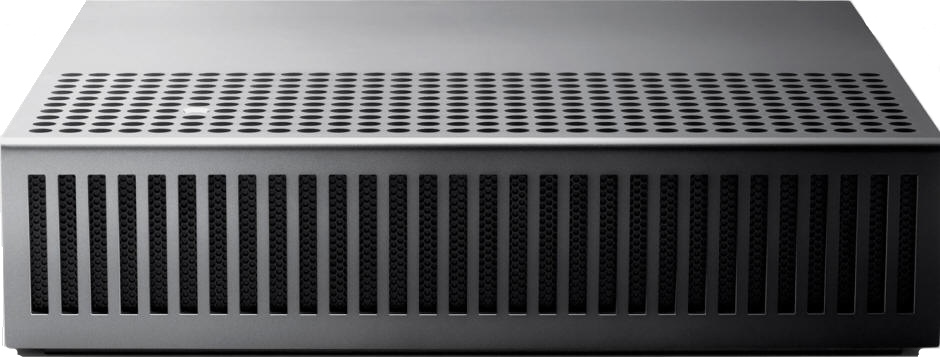




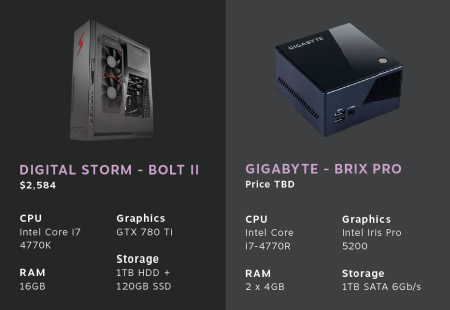
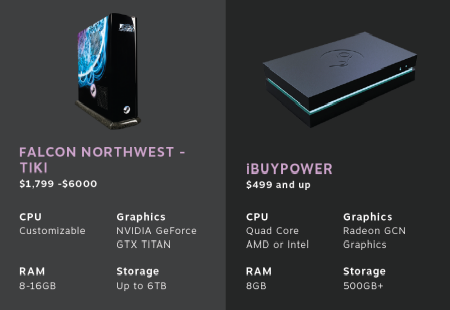
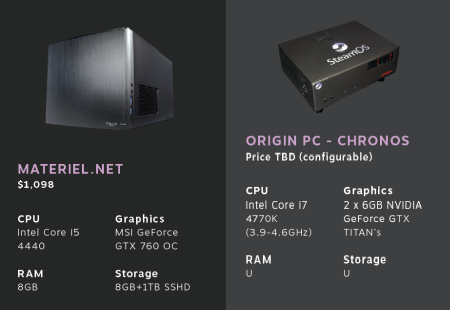
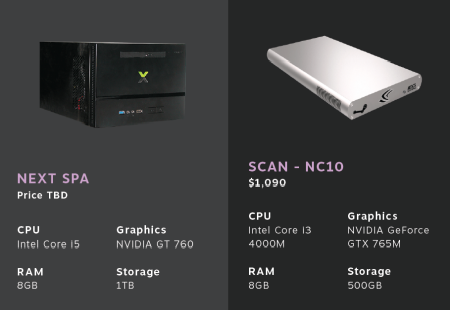
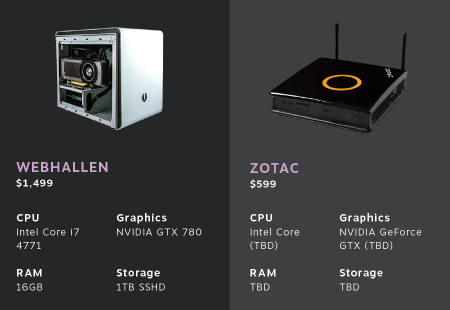
 CLONES
CLONES CONSOLE RATINGS
CONSOLE RATINGS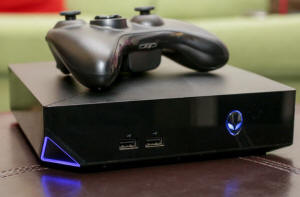
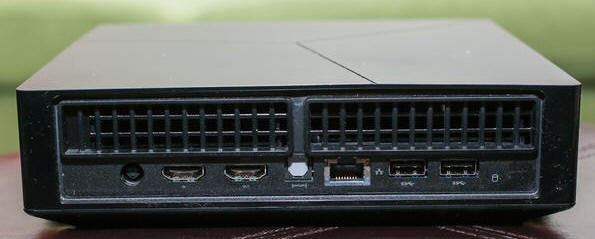
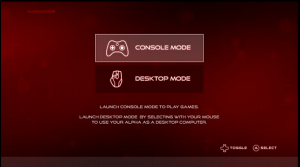
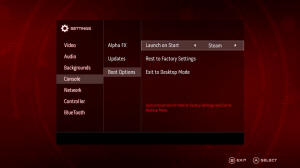
 SPECS & MANUALS
SPECS & MANUALS OTHER MEDIA
OTHER MEDIA
 WEB RESOURCES
WEB RESOURCES
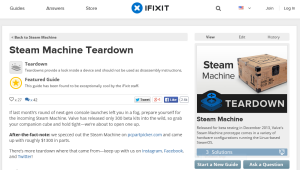
 DISCUSS
DISCUSS